
European Green Deal and the Fit for 55 Package explained for EV drivers
Electric Mobility is no longer a futuristic concept or a what-if scenario. There are already more than 10 million electric vehicles (EVs) on the world’s roads today and this number will grow above and beyond a hundred million within the current decade.
Electric cars are not only transforming the way we get from A to B, electric mobility is playing a vital role in the fight against climate change and is one of the driving forces behind governments’ efforts to reach long-term climate goals.
Europe strives to be the first climate-neutral continent by 2050, this goal was formalized back in 2019 by a set of policy initiatives known as the European Green Deal. In that same year, our mobility monitor research showed that while 60 percent of the general population felt that reducing CO2 emissions was personally important to them, only 10 percent said to be familiar with the European Green deal.
A lot has happened after the initial announcement of the EU Green Deal and new developments are just around the corner. However, with all these impactful developments in a time where it can feel like there is simply too much going on to keep track of; this article is meant to inform you about the current status of the EU Green Deal, the Fit for 55 Package, and what this new legislation will mean for EV drivers.
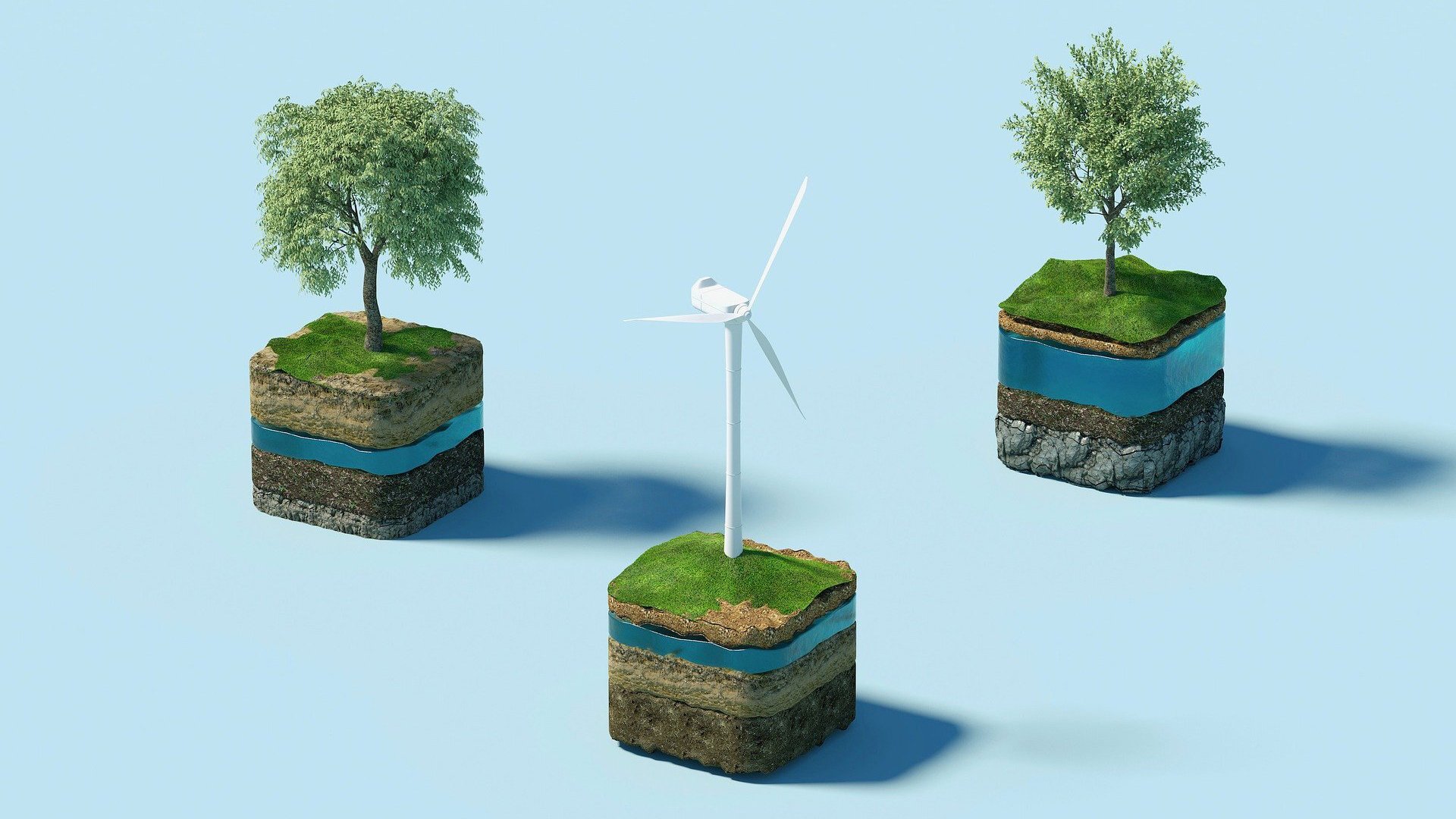
Table of contents
- Climate change
- Transport emissions
- What is the European green deal?
- What is Fit for 55?
- The Fit for 55 Package
- The Fit for 55 Package and electric mobility
- The legislative process
- What are the implications of the Fit for 55 Package for EV drivers?
Climate change
Before diving into the more complicated topic of EU legislation, let’s first take a step back and look at why battling climate change is important in the first place. It all boils down to this: The gradual gathering of greenhouse gases in the atmosphere –by, for example, burning fossil fuels– leads to the heating of the planet's surface and, in turn, impacts the environment. By rapidly cutting emissions of greenhouse gases we can lessen the risks of dangerous climate change.
Transport emissions
According to the IEA, transportation is responsible for 24 percent of direct CO2 emissions from fuel combustion and this percentage has been steadily rising by 1.9 percent every year since 2000.
Luckily, governments across the globe have already started implementing policies to put global emissions into sustained decline over the next few years, such as zero-emission vehicle (ZEV) mandates and CO2 emissions standards.
In 2019 transport emissions “only” increased by 0.5 percent, and this improvement is partly owed to the electrification of transport.
What is the European green deal?
The announcement of the European Green Deal in 2019 was a historic event, even described as “Europe’s man on the moon moment” by the European Commission President, Ursula von der Leyen.
With the Green Deal, all 27 Member States recognized the imminent threat posed by climate change. And for the first time in history, the EU Commission presented a detailed vision including a set of cohesive measures and a legally binding and ambitious net-zero emissions goal for 2050.
After the announcement of the EU Green Deal in 2019, we wrote an extensive article highlighting how it will impact transport ambitions by playing a vital role in EV adoption.
The announcement of the Green Deal came with a pledge of the Commission President, to put forward a comprehensive, responsible plan to increase the European Union's emissions reduction target for 2030, to achieve the ambitious goal of climate neutrality in 2050.
55 percent net emission reduction in 2030
Following a comprehensive impact assessment, it emerged that under current EU legislation, the European Union would only achieve a 60 percent net emission reduction by 2050. Therefore, in 2020, as part of the ‘2030 Climate target Plan’, the Commission established that the interim target of -55 percent net emission reduction by 2030 was necessary to achieve climate neutrality by 2050. To reach this goal, the European Commission adopted the "Fit for 55 Package" in July of 2021.
What is Fit for 55?
Think of it like this: The EU Green Deal is the master plan: net-zero emission by 2050 for the entire European continent. However, structural adjustments are needed to make sure this plan can be realized.
This is where the Fit for 55 Package comes in; a set of policy initiatives intended to help Europe achieve the goal of at least 55 percent net emission reduction by 2030
“We have to shift the whole of our economy into a higher gear. So we are leaving no stone unturned. Fit for 55 will align our laws with our ambition.” – EU Green Deal chief, Frans Timmermans said in May.
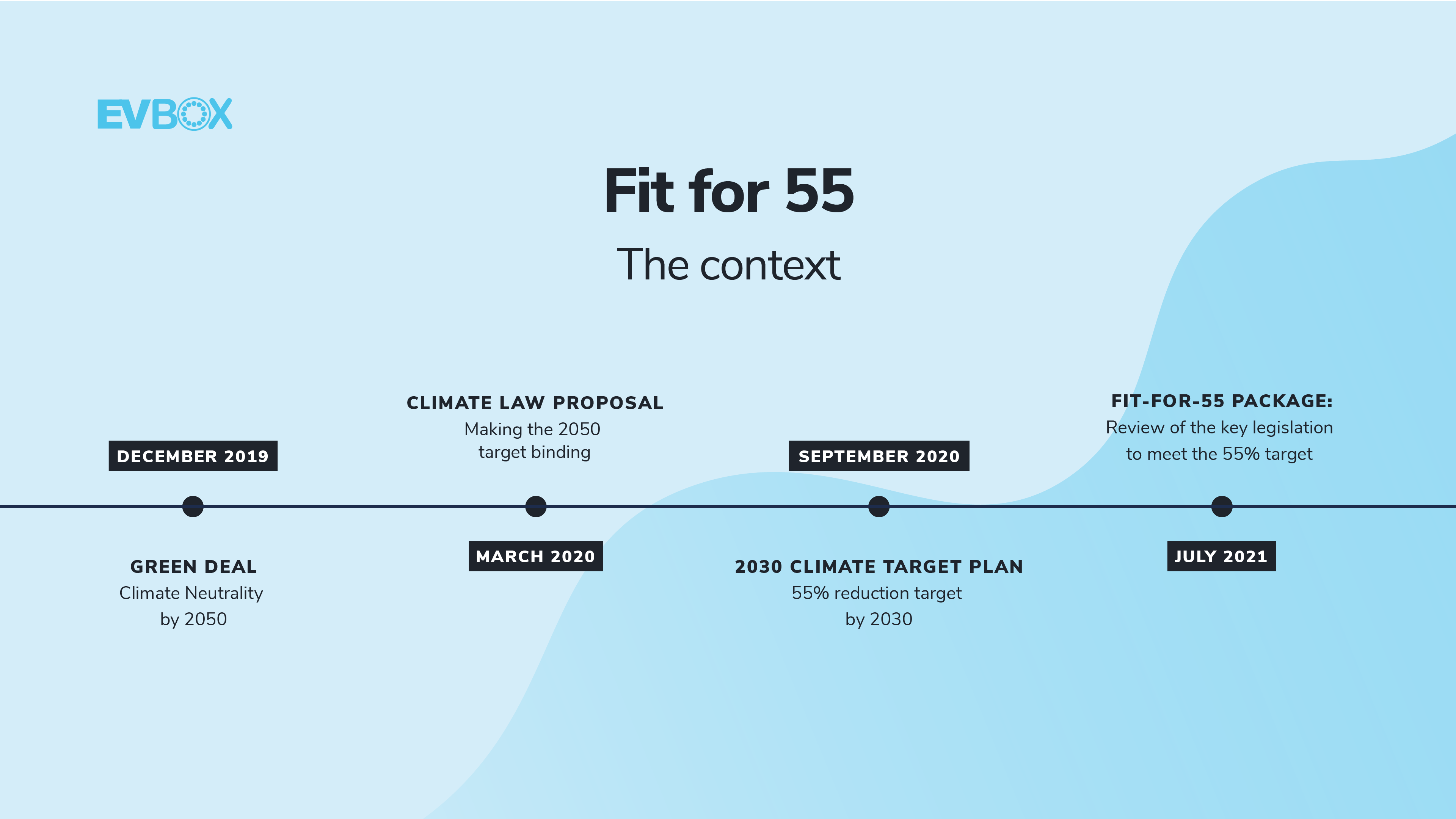
The Fit for 55 Package
The Fit for 55 Package will be published in two parts. The first part of the package (comprising 13 legislative proposals) was published in July 2021, and the second part is set to be published on December 14th, 2021.
Part 1 of the Fit for 55 Package (July 2021)
Revisions to and amendments of existing EU laws
Revisions
- EU emission trading scheme (EU ETS)
- Regulation on land use, land-use change, and forestry (LULUCF)
- Effort sharing regulation (ESR)
- Energy taxation directive
- Alternative fuels infrastructure directive (AFID)
Amendments
- Renewable energy directive (RED)
- Energy efficiency directive (EED)
- Regulation setting CO2 emission standards for cars and vans
New legislative proposals
- New EU forest strategy
- A carbon border adjustment mechanism (CBAM)
- A Climate Action Social Facility
- ReFuelEU Aviation – on sustainable aviation fuels
- FuelEU Maritime – on greening Europe’s maritime space
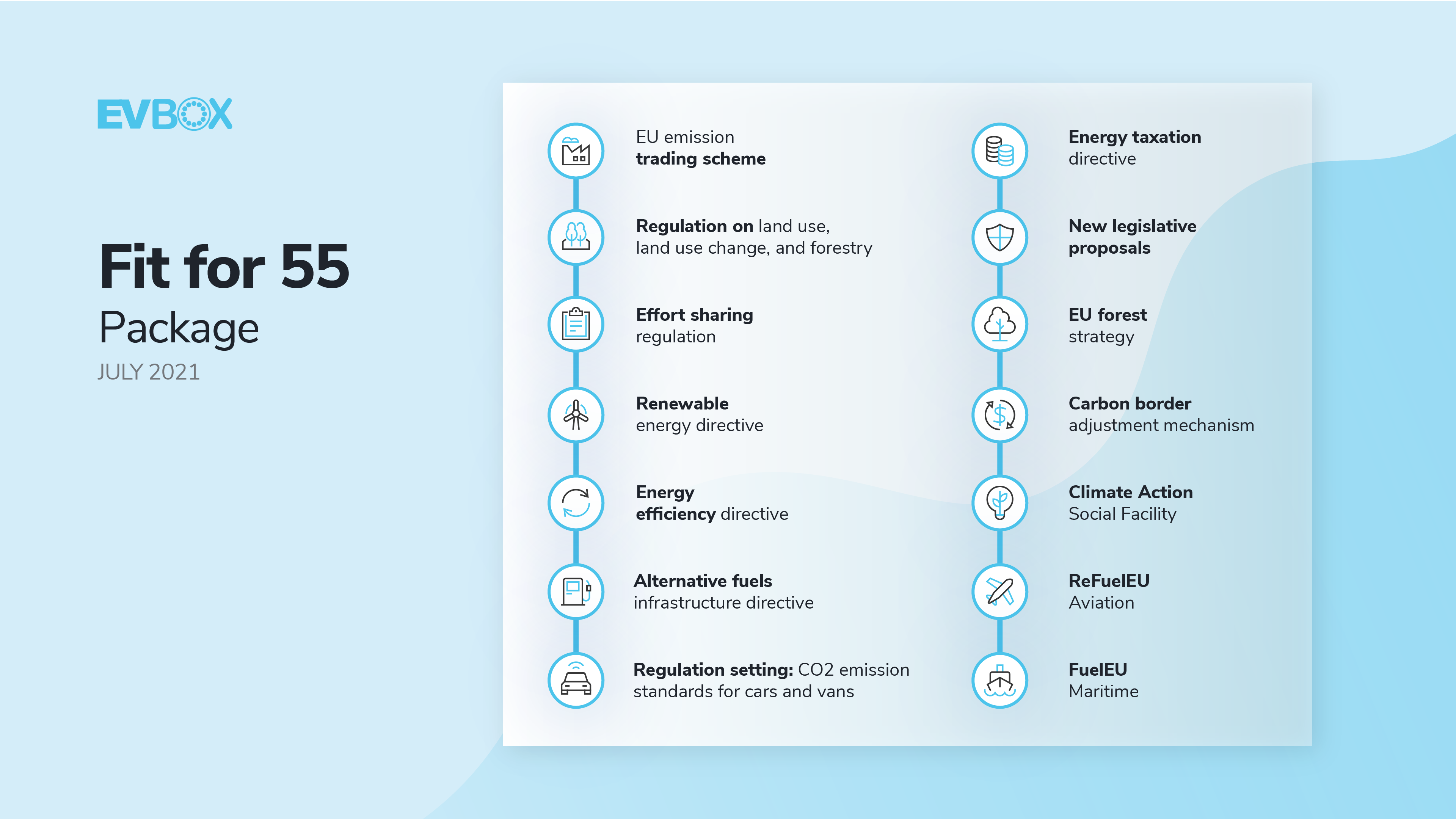
The Fit for 55 Package and electric mobility
The Fit for 55 Package proposes an unprecedented set of ambitious plans to be implemented by 2030 across all sectors and industries. Naturally speaking, the aforementioned legislation proposals go far beyond just electric mobility and transportation. However, for the sake of this article, we will focus on how the Fit for 55 Package will impact electric mobility.
Reducing emissions from road transport
Reducing emissions from road transport is a crucial aspect of the Fit for 55 Package. No surprise there, as according to the European Environment Agency, road transport constitutes the highest proportion of overall transport emissions. In 2019 it emitted 72 percent of all domestic and international transport Greenhouse Gases (GHG).
The Fit for 55 Package indicates electric mobility as a pillar for transport decarbonization that aims to:
- Accelerate the roll-out of charging infrastructure;
- Make driving electric easier and more accessible to consumers;
- Establish a clear, binding phase-out date for fossil fuels.
To achieve these goals, there are three specific pieces of legislation that will impact the decarbonization of Europe’s transport industry.
Charging infrastructure
The Alternative Fuels Infrastructure Regulation is a revised version of the 2014 Alternative Fuels Infrastructure Directive, which required EU countries to develop national policy frameworks (NPFs) for developing publicly available refueling and recharging points for alternative fuel vehicles and vessels.
The Directive also aimed to improve coordination of alternative fuel infrastructure development to provide the long-term security needed for investment in the technology for alternative fuels and alternative fuel vehicles. The revision proposed in July includes several key changes to the legislation, from binding targets for EV charging infrastructure to the new provision to increase the user-friendliness of recharging infrastructure.
Renewable electricity
The Renewable Energy Directive was adopted originally in 2009 to deliver the EU goal of a minimum 20 percent share of renewable energy sources in final energy consumption by 2020. The Commission's proposal for a revised Renewable Energy Directive sees the binding EU minimum share of renewables in final energy consumption to 40 percent by 2030. The Commission's proposal would also create a new credit mechanism aimed at boosting the use of renewable electricity in transport and establish specific smart charging and V2G requirements for private EV recharging stations.
CO2 emission standards for new vehicles
The CO2 emission performance standards for cars and vans Regulation sets targets for reducing the CO2 emissions of new cars and vans. The current revised proposal sets a full phase-out of internal combustion engine vehicles by 2035, with 100 percent greenhouse gases reduction targets for new cars and vans sold as of 2035. The Regulation also sets an interim reduction target of -55 percent for cars and -50 percent for vans by 2030.
So, are these proposals now law? Well, not yet, first all the proposals have to go through an extensive legislative process.
The legislative process
Before becoming law, the Fit for 55 Package will have to go through the EU legislative process. The first part of the proposal, which was presented on July 14th, is currently under review by the European Parliament and the Council of the European Union. Both parties will present their proposed amendments to the package, and, once an agreement is found, the proposal will be adopted as law.
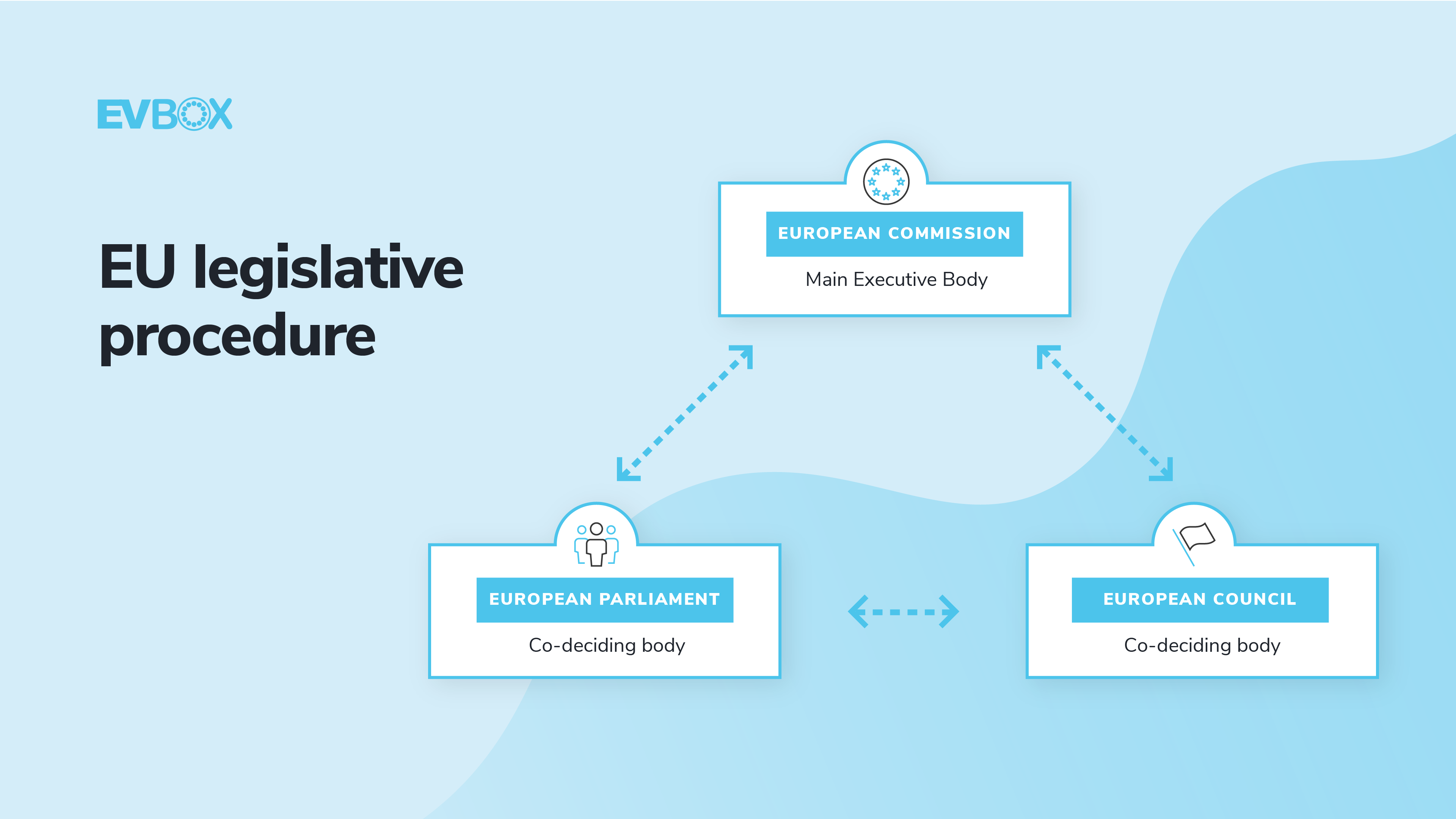 The same procedure will follow concerning the second part of the proposal, which will be presented by the European Commission on December 14th.
The same procedure will follow concerning the second part of the proposal, which will be presented by the European Commission on December 14th.
When will the Fit for 55 Package be fully implemented?
We can expect all Fit for 55 Package proposals to effectively be adopted as laws somewhere before the end of 2022.
We’ve created a tentative timeline to visualize the legislative process.
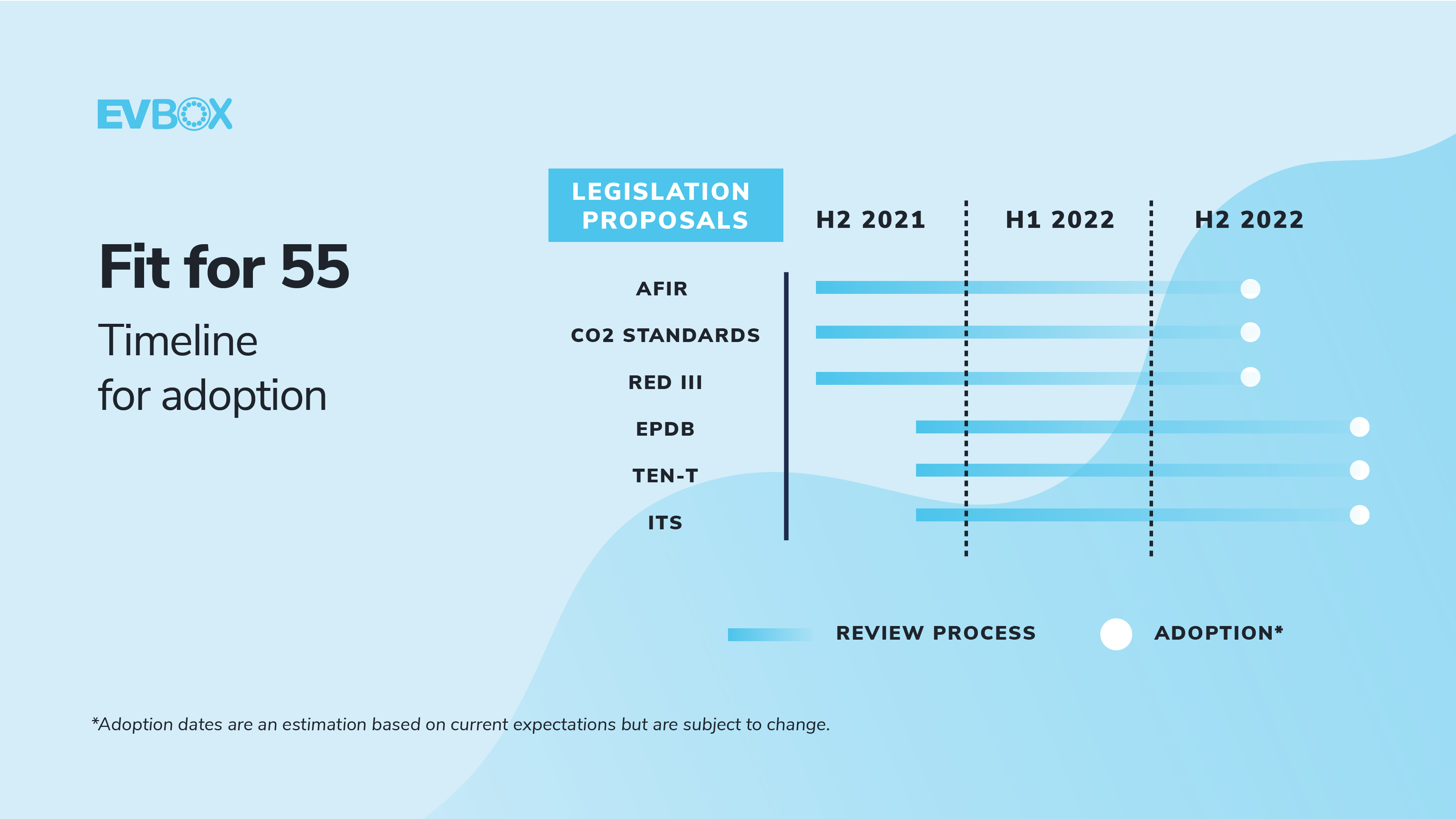
What are the implications of the Fit for 55 Package for EV drivers?
Okay, now that we gave some background information on the bigger picture, we can finally hone in on what all of this will mean for you.
Greater motivation to go electric
The clear phase-out date for internal combustion engine (ICE) cars will provide clarity to industry and consumers for the transition ahead. If anything, it will ensure the EU stays at the forefront of global market uptake for electric vehicles by stimulating the automotive industry to intensify electrification efforts providing drivers with a stronger motivation to go electric.
Legal framework for recharging infrastructure
With the newly proposed revision, the Alternative Fuels Directive turns into a Regulation. As opposed to a Directive, a Regulation is a legally binding instrument. Meaning that consumers can expect common rules, technical specifications, and requirements across the European Union regarding EV charging stations. In layman’s terms, this means that there will be a common blueprint for the development of charging networks across EU countries, resulting in a better electric driving experience for all.
Increased and better quality charging infrastructure
The package sets minimum binding targets for the deployment of EV charging infrastructure. According to the current proposal, from entry into force Member States would have to provide at least 1 kW of publicly accessible fast-charging power per BEV in their country. Furthermore, Member States would have to create National Policy Frameworks for EV charging infrastructure, outlining their assessment, targets, and key milestones for the development of a national charging network. This means that in each EU Member State, drivers will be guaranteed that the public charging infrastructure network will meet their specific charging needs, and that future developments will be based on a comprehensive assessment of the country's fleet growth and existing infrastructure
A step forward in truck electrification
The package sets minimum binding targets for the deployment of heavy-duty vehicles. According to the current proposal, as of 2025, consumers should be able to access recharging infrastructure for electric heavy-duty Vehicles at least every 60km along highways across Europe. Furthermore, the Commission has set specific EV charging infrastructure targets for urban nodes and resting areas, to ensure a seamless transition to e-trucking.
Easier international travel
The package sets minimum binding targets for Europe’s motorways with a particular focus on cross-border travel. As of 2025, EV drivers can expect to find recharging points installed every 60km, even when crossing national borders. This will ensure full cross-border connectivity and allow electric vehicles to better circulate throughout the Union.
-1.jpg?width=5472&name=jp-valery-_s5aRlUXtyg-unsplash%20(1)-1.jpg)
An improved user experience
The package includes a set of dispositions to ensure better price transparency, compatibility labeling, data provision, and sharing, and payment requirements to make EV driving easier for consumers.
Smarter Charging
The proposed legislation will mandate every publicly accessible charger in the EU to be digitally connected and smart charging capable, to contribute to a more energy-efficient and consumer-oriented charging experience.
In conclusion, more and more drivers across the continent will embrace electric mobility in the next few years as it becomes the new norm. In part, thanks to the prioritization of governments and a shared vision –and urgent need– of creating a more sustainable future. The Fit for 55 Package is a necessary step for the EU to be able to reach its ambitious goals, and key to turning them into a reality.
